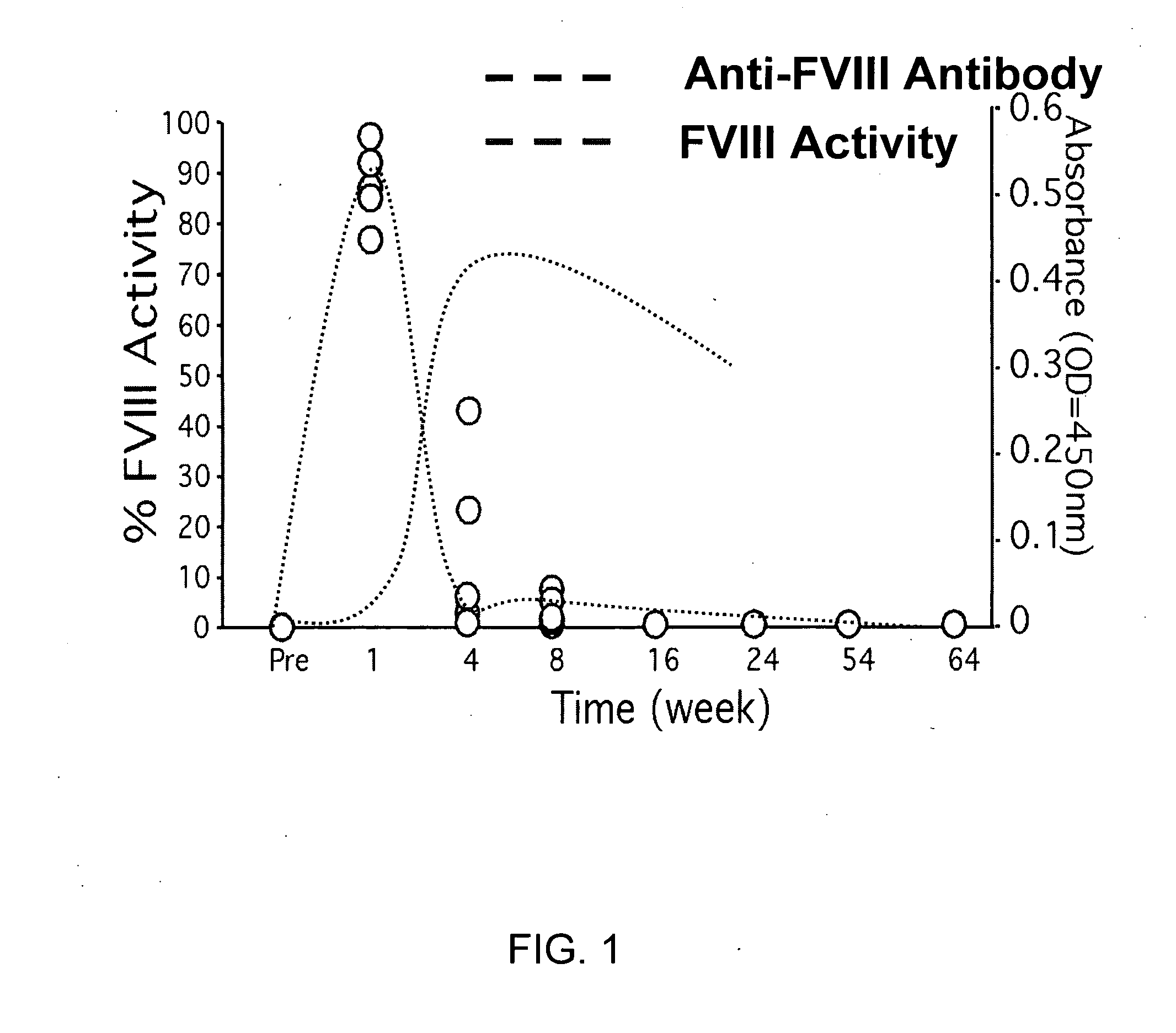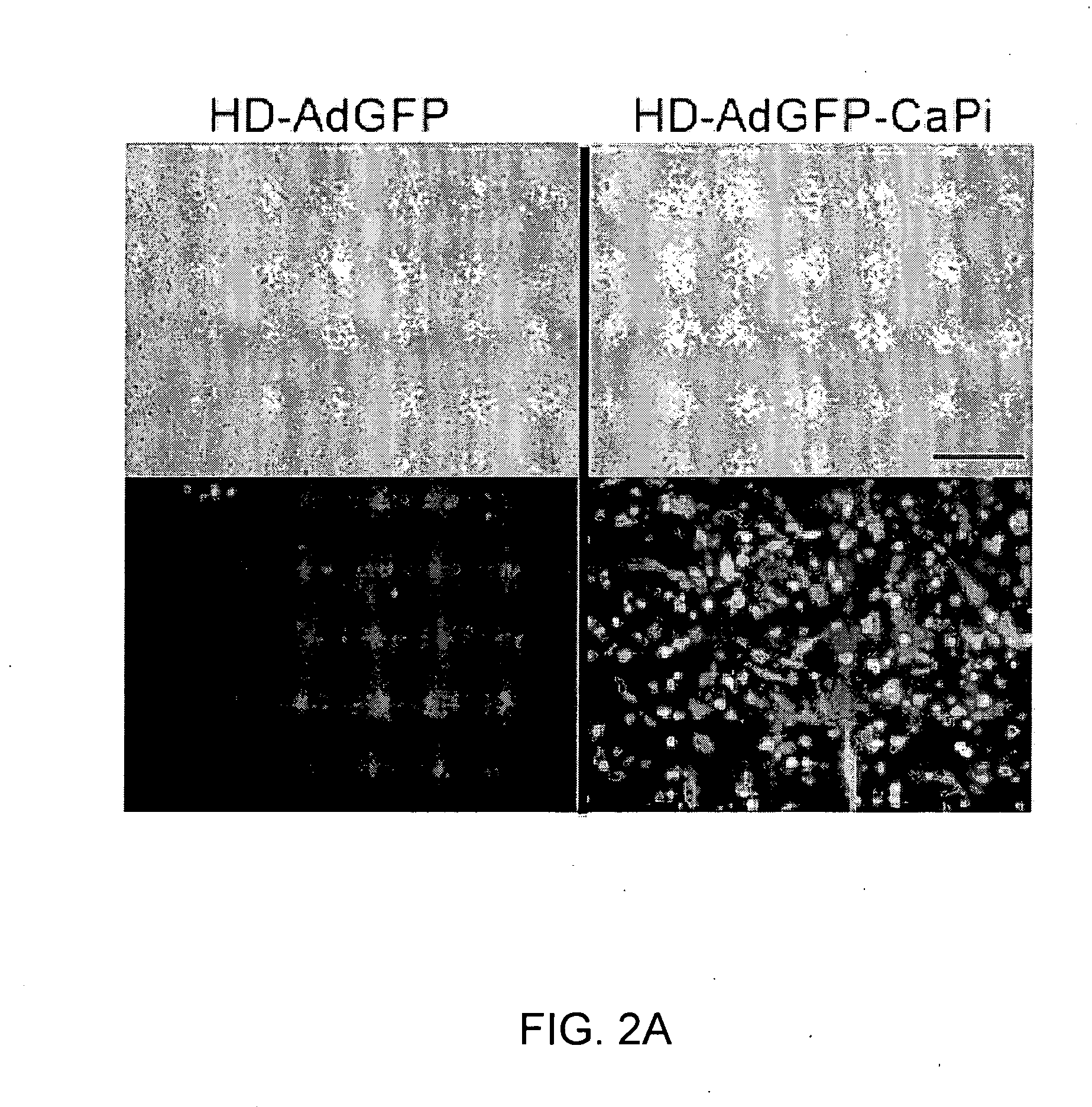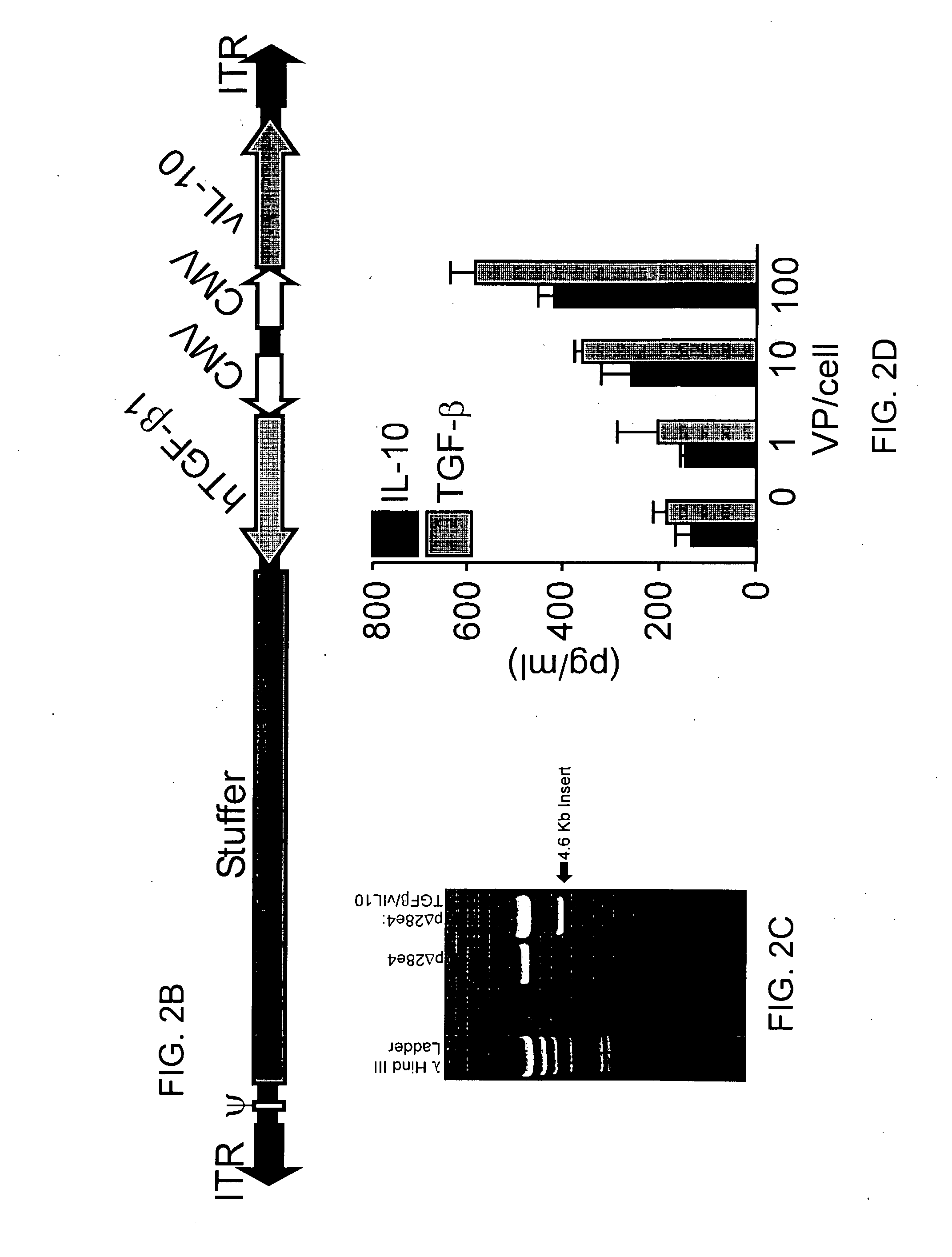Antigen specific immunosuppression by dendritic cell therapy
a dendritic cell and antibody-specific technology, applied in the field of dendritic cell therapy, can solve the problems of reducing the expression of th1 responses, reducing the expression of th2, and reducing the expression of th2 responses, so as to improve the expression of a protein in a mammal, the effect of enhancing expression
- Summary
- Abstract
- Description
- Claims
- Application Information
AI Technical Summary
Benefits of technology
Problems solved by technology
Method used
Image
Examples
example 1
Dendritic Cell Mediated Adoptive Immune-Modulation Suppresses the FVIII Antibody Response Resulting in Long-Term Gene Expression
[0215]Genetic modification of dendritic cells (DC) is a powerful tool to harness the resulting immune response to antigens of interest. A general goal of this approach has been to induce immunity to harmful viral infections, bacteria, or tumor antigens. The results presented herein demonstrate that DCs are useful in inducing tolerance to non-harmful self antigen, transplant, or therapeutic antigens. The tolerogenic potential of DCs offers a significant improvement to current therapies.
[0216]It has been demonstrated that Factor VIII gene transfer by systemic injection of helper-dependent vector resulted in long term phenotypic improvement in a large, outbred animal model. Though this pre-clinical context was encouraging, this and other experiments highlight the problem of unwanted immune responses to the therapeutic protein (FIG. 1). Moreover, it is well est...
example 2
Dendritic Cell Therapy for Tolerance Induction
[0232]FVIII specific inhibitor formation in both mice and humans is a CD4+ T cell dependent mechanism requiring T cell interaction with DC and B cells (Lacroix-Desmazes et al., 2002 Autoimmun Rev 1: 105-110; Wu et al., 2001 Thromb Haemost 85: 125-133). Since DCs are key regulators of downstream T cell responses, they are an attractive target to re-program antigen presentation and harness the resulting immune response. The results presented herein demonstrate a new method of enhancing FVIII gene transfer by at least regulating the immune response directed against FVIII. In the present study, FVIII was used as a non-limited example for the strategy of targeted immune suppression as adjunct prophylaxis to prolong the duration of FVIII gene therapy.
[0233]HD-Ad was engineered to express the immuno-modulatory cytokines TFGβ and IL-10 at a sufficient level to attenuate DC activation, induce apoptosis, and increase the frequency of antigen-speci...
example 3
Dendritic Cell Mediated Adoptive Immune-Modulation Suppresses the Antibody Response to CFA / Albumin
[0236]The following experiments were designed to test whether combine systemic gene transfer with a tolerogenic adoptive immune-modulatory strategy to suppress the immune response in an antigen specific manner. In the Example, the antigen of interest is albumin.
[0237]The next set of experiments were designed to determine whether DCs treated with HD-Adtol would mediate targeted immune suppression in vivo. Albumin-loaded, HDAdTol-treated DCs were transferred into naïve out mice (Alpha 1 antitrypsin-loaded, HDAdTol-treated DCs were transferred into naïve mice as a control). The recipient mice were then subjected to immunogenic challenge with Complete Freunds Adjuvant (CFA) and albumin (FIG. 12). It was observed that adoptive DC transfer suppressed the development of anti-albumin antibody titer (FIG. 13).
[0238]The results presented herein demonstrate that DCs engineered with a helper-depend...
PUM
| Property | Measurement | Unit |
|---|---|---|
| Therapeutic | aaaaa | aaaaa |
| Biocompatibility | aaaaa | aaaaa |
Abstract
Description
Claims
Application Information
 Login to View More
Login to View More - R&D
- Intellectual Property
- Life Sciences
- Materials
- Tech Scout
- Unparalleled Data Quality
- Higher Quality Content
- 60% Fewer Hallucinations
Browse by: Latest US Patents, China's latest patents, Technical Efficacy Thesaurus, Application Domain, Technology Topic, Popular Technical Reports.
© 2025 PatSnap. All rights reserved.Legal|Privacy policy|Modern Slavery Act Transparency Statement|Sitemap|About US| Contact US: help@patsnap.com



